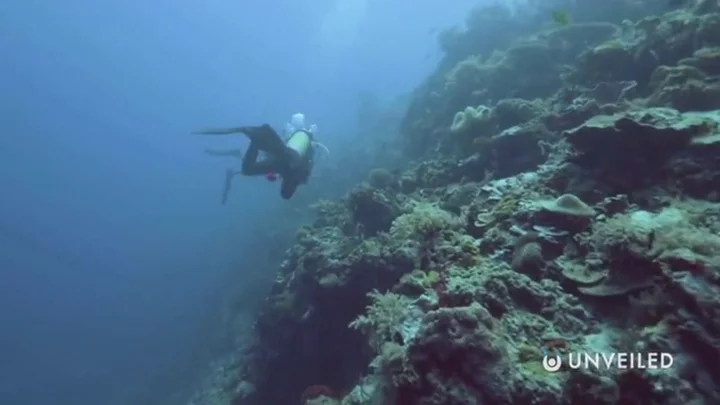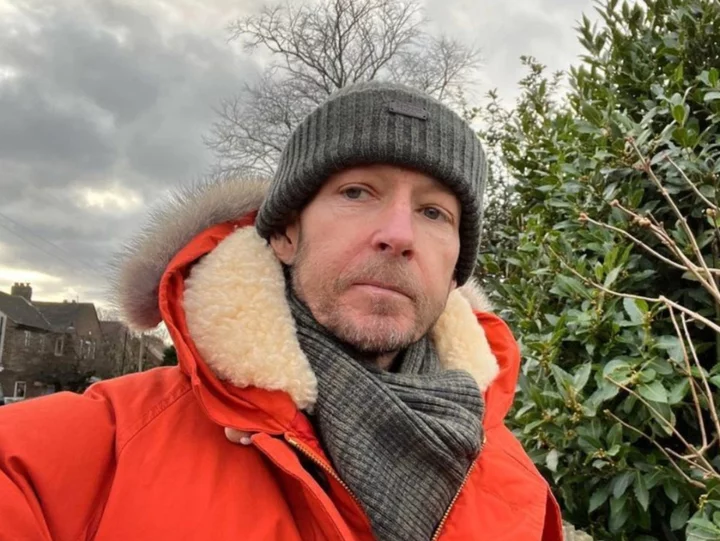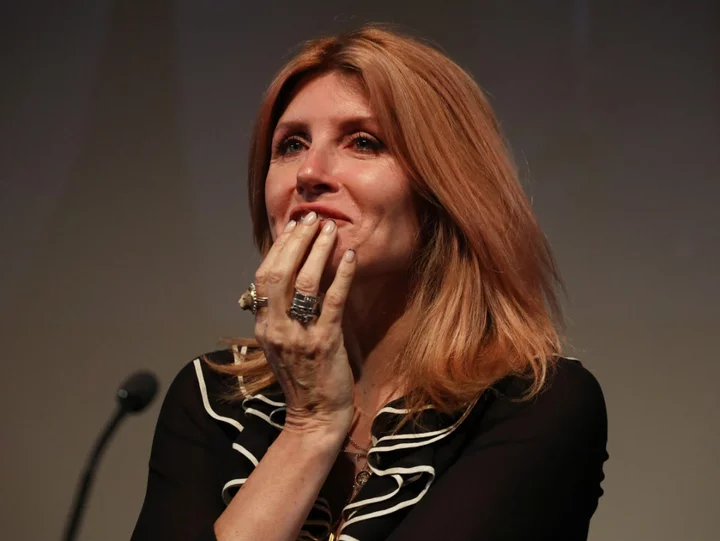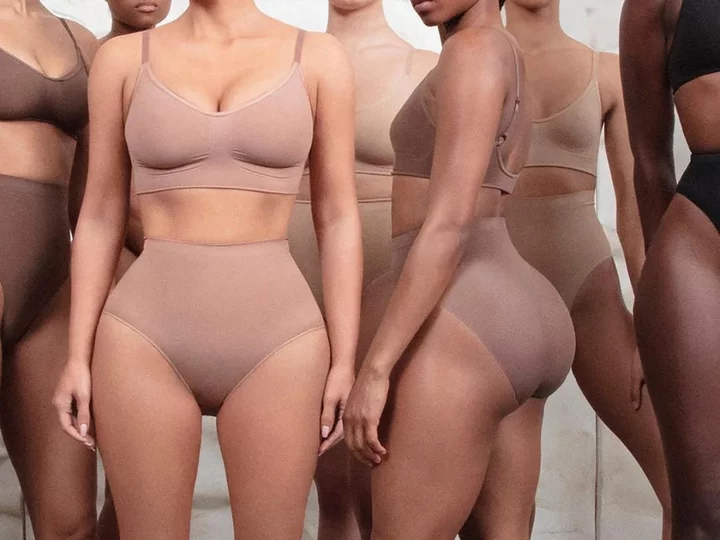
Harry Styles pauses concert to assist fallen fan
Harry Styles brought his 'Love On Tour' jaunt to Ireland at the weekend.
2023-06-12 16:22

Massive ocean discovered beneath the Earth's crust containing more water than on the surface
It feels like there have been staggering science stories emerging every other day recently, all of which have blown our tiny little minds. First, there was the discovery of a terrifying black hole pointing right at us, then there was a huge hole found in the sun and a missing continent found after going missing for 375 years. Now, people are only just realising that there’s a massive ocean hidden under the Earth’s crust. It turns out there’s a huge supply of water 400 miles underground stored in rock known as 'ringwoodite'. Sign up to our new free Indy100 weekly newsletter Scientists previously discovered that water is stored inside mantle rock in a sponge-like state, which isn’t a liquid, solid or a gas, but instead a fourth state. The scientific paper titled ‘Dehydration melting at the top of the lower mantle’ was published in 2014 and laid out the findings. "The ringwoodite is like a sponge, soaking up water, there is something very special about the crystal structure of ringwoodite that allows it to attract hydrogen and trap water," said geophysicist Steve Jacobsen at the time. "This mineral can contain a lot of water under conditions of the deep mantle,” added Jacobsen, who was part of the team behind the discovery. He added: "I think we are finally seeing evidence for a whole-Earth water cycle, which may help explain the vast amount of liquid water on the surface of our habitable planet. Scientists have been looking for this missing deep water for decades." Scientists made the findings at the time after studying earthquakes and discovering that seismometers were picking up shockwaves under the surface of the Earth. From that, they were able to establish that the water was being held in the rock known as ringwoodite. If the rock contained just 1 per cent water, it would mean that there is three times more water under the surface of the Earth than there is in the oceans on the surface. Have your say in our news democracy. Click the upvote icon at the top of the page to help raise this article through the indy100 rankings.
2023-06-12 15:28

Directing Flamin' Hot was super empowering, says Eva Longoria
Eva Longoria has revealed that she relished the experience of directing 'Flamin' Hot'.
2023-06-12 15:27

What is 'Red Mirror'? 'Black Mirror' Season 6 hints at shift to true horror genre with 'Demon 79'
'Black Mirror' Season 6 seems to take inspiration from iconic 1970s horror films like 'The Shining'
2023-06-12 15:25

Noel Gallagher gets Later... with Jools Holland special
Noel Gallagher has performed live cuts for the BBC music show.
2023-06-12 15:24

Ancient formation discovered wrapped around Earth's core
The structure of the Earth beneath our feet has been fascinating to members of the scientific community recently, and it turns out it’s far more complex than people initially thought. First, we learned of the news that there’s a massive ocean beneath the Earth’s crust which contains more water than all of the seas on the surface. Now, another study has been published which has taken an in-depth look at the geology beneath the southern hemisphere. The new research, published in Science Advances, has found evidence that an entire ocean floor actually runs the length around the core. Sign up to our new free Indy100 weekly newsletter This is a relatively thin layer that sits on the core-mantle boundary around 1,800 miles beneath the surface of the Earth. It's an ancient formation that could provide more insight into the structure of the planet beneath our feet. Geologist Samantha Hansen and her colleagues from the University of Alabama led the research. They observed the structure by using 15 monitoring stations under the ice of Antarctica, mapping the waves from earthquakes. Doing this allowed them to analyse the structure of the Earth below the surface, including the ultra-low velocity zones where waves moved much slower. "Seismic investigations, such as ours, provide the highest resolution imaging of the interior structure of our planet, and we are finding that this structure is vastly more complicated than once thought," Hansen said. "Analyzing [thousands] of seismic recordings from Antarctica, our high-definition imaging method found thin anomalous zones of material at the CMB everywhere we probed," geophysicist Edward Garnero from Arizona State University also said. "The material's thickness varies from a few kilometers to [tens] of kilometers. This suggests we are seeing mountains on the core, in some places up to five times taller than Mt. Everest." "Our research provides important connections between shallow and deep Earth structure and the overall processes driving our planet," Hansen added. Have your say in our news democracy. Click the upvote icon at the top of the page to help raise this article through the indy100 rankings.
2023-06-12 15:21

Josh Hartnett hails 'genius filmmaker' Christopher Nolan
Josh Hartnett has loved working with Christopher Nolan on 'Oppenheimer'.
2023-06-12 15:19

Jonnie Irwin explains why he hasn’t told sons about his terminal cancer: ‘Let’s bury our heads in the sand’
Jonnie Irwin has opened up about why he hasn’t told his three children that he has terminal cancer. The A Place in the Sun presenter, 49, publicly revealed his diagnosis in November 2022 after his lung cancer spread to his brain. However, his young sons, who he shares with wife Jessica Holmes, do not know that their father is dying. Irwin says it would be difficult for them to understand his situation at this age: his eldest son Rex is four-and-a-half, while twins Rafa and Cormac are turning three this month. In a new interview with Hello! magazine ahead of Father’s Day, Irwin said: “I keep being asked, ‘Are you going to tell them?’ but tell them what? “It would be horrible news that they’d have to get their heads around. And it would confuse the hell out of Rex – he’s got a shocking enough day coming. Let’s bury our heads in the sand for as long as possible.” In the meantime, Irwin and Holmes are trying to give their children a sense of normalcy by continuing to teach and play with them. Holmes described the presenter as a “great dad and a big kid himself”, adding: “All the boys gravitate to him when they want to show off and get his attention. They’re aware that Jonnie needs his rest and can’t always jump up and play football for hours, but they’re more than happy snuggled up on the sofa, watching a movie. “Story time is a big thing at bedtime and that is something I know Jonnie treasures with them.” In November, when Irwin first revealed his diagnosis, he said Rex “doesn’t need to know” about his illness yet. “We make fun of my hair – he calls it my ‘spiky head’ – but as far as he’s concerned, his dad is normal and why would I shatter that innocence?” Earlier this month, Irwin was admitted to hospital to be “monitored” as his treatment continues. He shared in an Instagram post that he was admitted to keep an eye on a “changeover in my pain management regime”. In an appearance on the OneChat podcast by insurer AIG Life, Irwin said he had been close to dying “at least twice”. “You lose your memory, you lose your patience. I have got a very short temper. It’s not made me a better person, that’s for sure,” he admitted. However, Irwin emphasised that he prefers to think of his situation as “living with cancer, rather than dying from cancer”. Read More A Place In The Sun’s Jonnie Irwin admitted to hospital amid terminal diagnosis Jonnie Irwin says he’s been ‘close to death’s door twice, at least’ Jonnie Irwin says going public with terminal cancer diagnosis was day he began ‘living again’
2023-06-12 14:49

Novo Nordisk Plans $2.3 Billion Manufacturing Expansion in Denmark
Novo Nordisk A/S is spending 15.9 billion Danish kroner ($2.29 billion) to expand production facilities in Denmark as
2023-06-12 14:16

Sharon Horgan says she has PTSD from daughter’s health scare
Sharon Horgan has opened up about having post-traumatic stress disorder (PTSD) after her eldest daughter was diagnosed with meningitis as a baby. The Irish actor, who will star in the forthcoming BBC One drama Best Interests with Michael Sheen, said she drew on the experience in order to play her character in the new series. Horgan’s daughter survived the life-threatening illness, but it left an “aftershock” on her mother. “We were so unbelievably lucky and we know that,” the Bad Sisters star told The Times in a new interview, published today (Sunday 11 June). “But the aftershock – there’s definitely PTSD and I dealt with any of my second daughter’s illnesses with blind panic because you always think, ‘If it can happen, why couldn’t it happen again?’” Both of Horgan’s daughters, Sadhbh and Amer, are now teenagers. She shares them with her ex-husband, Jeremy Rainbird. Best Interests tells the story of Nicci (Horgan), a mother who sues the NHS after doctors decide her Marnie (Niamh Moriarty) should be taken off life support after her condition, muscular dystrophy, deteriorates. Horgan stars opposite Sheen, who plays Nicci’s husband Andrew. In the show, Andrew is torn between his love for Marnie and his unwillingness to support his wife’s case. The friction between Nicci and Andrew shows that they “had a real relationship that has difficulties”, Horgan said. “When things get really, really bad, the accusations are there, a certain amount of finger-pointing, which happens anyway, just even in normal parenting,” she explained. After her divorce from Rainbird in 2019, Horgan said the adjustment to co-parenting made her doubt if she was a good mother. During an appearance on Desert Island Discs in 2020, she told host Lauren Laverne: “I was fun mum for years. I entirely thought that was my role but that changes when you co-parent. “Everything changes and you take on a lot more roles and I am much more practical than I was, and I think that is a positive thing.” She continued: “It had some dips in the middle where I thought, ‘Oh, that thing I thought I was, which was a good mother, I am not entirely sure about’. “When you bring anything like that into your kid’s life it’s tricky, when you turn the roles upside down, but it balances out and everything eased back.” Read More Shapewear is booming, and body image experts are worried: ‘It’s really dangerous’ Chris Hemsworth thanks wife Elsa Pataky for her ‘forgiveness’ Kelis addresses Bill Murray dating rumours for the first time Sharon Horgan opens up about ‘aftershock’ after daughter’s meningitis Jamie Foxx’s rep addresses conspiracy Covid vaccine left actor ‘paralyzed and blind’ Debate sparker over parent who wouldn’t give her daughter any birthday cake
2023-06-12 14:16

Shapewear is booming, and body image experts are worried: ‘It’s really dangerous’
In a number of scenes in 2001’s Bridget Jones’s Diary, our heroine – a thirtysomething singleton played by Renée Zellweger – squashes the skin of her lower torso into an array of Lycra shapewear, all in an attempt to make herself appear slimmer. When Hugh Grant’s Daniel Cleaver sets his eyes on her high-wasted, nude-coloured underpants in one memorable scene, Bridget blushes with embarrassment. “Well, hello mummy,” Daniel purrs. At the time of the film’s release, control shapewear – or tummy-tucking underwear designed to smooth its wearer – was marketed predominantly at people like Bridget, someone who was told by society she was “fat” or undesirable unless she had a flat stomach. Today, though, shapewear is branded differently, marketed to young women as a sexy, must-have fashion accessory. Shapewear products are not only promoted as stomach-smoothing fixes, but for anyone who wants a narrow waist or their figure to resemble a contoured, Kardashian-style hourglass. Skims, Kim Kardashian’s self-owned shapewear brand that she founded in 2019, sells viral sculpting bodysuits geared towards achieving this particular body shape. They start at £70. Since the launch of Skims, as with anything that a member of the Kardashian clan wears or makes, fast fashion knock-offs have swelled the market. Online retailer PrettyLittleThing, which has a murky track record of contributing to a harmful cycle of fast fashion, sells duplicates of the Skims viral bodysuit for around £20. They also sell waist trainers – a corset-style casing worn underneath clothes to aggressively teach your waist to be narrow – for just £12. “Doll cinch your waist in an instant with this waist trainer,” the item’s description reads. The product has boning to make it stiff and restrictive. Venture onto TikTok and you’ll find viral dresses with Spanx-style shapewear, designed to minimise the width of a person’s waist and accentuate their bottom, built into the clothing itself. While Skims is not solely responsible for this recent boom in shapewear, it has contributed to transforming how we view it – Bridget’s “granny pants” are now glamorous and aspirational. For the brand’s latest collection, for example, buzzy British singer-songwriters Raye and PinkPantheress were enlisted to promote it, along with viral Bronx rapper Ice Spice. The resulting campaign wouldn’t look out of place in the pages of Vogue. What this marketing tells us is that fashion isn’t just about the garments you wear, but the apparently malleable shape of the body on which they’re worn. Early shapewear emerged in the 16th century, not as a trend or body sculpting device, but for practical support. Karolina Laskowska, a lingerie designer and director of the underwear archive The Underpinnings Museum, tells me that the primary purpose of shapewear back then was to support the body much in the same way that a contemporary bra is made to support the breasts today. “A pair of stays [a corset style bodice] would have offered bust and back support for women who worked,” she explains. “These styles were more functional and supportive, rather than trend-driven.” The beginnings of the shapewear we see today were first seen in the Sixties, when the invention of Lycra, a synthetic-based elastic fibre, allowed for stretchier fabrics. What Laskowska dubs the grandparent of modern shapewear was the “Little X Girdle” by a British brand called Silhouette. “It was a turning point for a shift from traditional structured corsetry into elasticated shapewear,” she says. The item was a seamless, pull-on girdle – an elasticated corset extending from waist to thigh – and was eventually licenced to sell in over 32 countries as turnover increased exponentially. We then saw the evolution of more comfortable, everyday shapewear, like those made by Spanx, an American brand founded in 2000. They’re so uncomfortable, but they’re so afraid of what others will think about them due to their body size Victoria Kleinsman By contrast, modern shapewear is now geared towards sculpting the body to appear differently underneath clothes. And now, fast fashion is getting involved, too. But lingerie designers like Laskowska are increasingly worried about the consumer physically “hurting” themselves with badly made undergarments. “We’ve seen fast fashion adopt corsetry and shapewear trends but it’s not made to fit the human anatomy, since it’s made to be as cheap as possible,” she says. She adds that people could “injure” themselves with elasticated shapewear if they buy a size too small, meaning they could potentially restrict their blood’s circulation. Victoria Kleinsman, a self-esteem expert and body love coach, works with women between the ages of 13 to 60, and says that she’s seen how her younger clientele are feeling the pressure to wear shapewear in order to conform to the cult of thinness. Some clients have bought pantyhose with built-in cushioning to make the bottom look larger and perkier. Others will wear layers of shapewear to sculpt the body, particularly the waist and stomach, to look slimmer or flatter. To Kleinsman, wearing modern shapewear allows people to apply an “IRL [Instagram] filter” to their bodies. She speaks to women each day who are “crying” to her on Zoom calls because they’re worried about what their bodies look like. “It’s to the point when it’s boiling hot weather [but] they’re wearing spandex shapewear and tights, and they’re so uncomfortable, but they’re so afraid of what others will think about them due to their body size.” The expert fell into her line of work after she struggled with an eating disorder – she also wore a waist trainer when she was dealing with her own body image issues. “I would go to the gym wearing it because apparently you ‘sweat more’ and therefore lose ‘water fat’,” she says. “Which is b******! It’s physically painful to your physical body and even more painful to your emotional and mental well-being.” Kleinsman doesn’t think that this type of elasticated shapewear has anything to do with fashion and it should not be marketed as such. “It’s really dangerous,” she tells me. “Shapewear gives you a fake ‘confidence’ but then underneath it all when that comes off, then, who are you?” The popularity of Skims and their various knock-offs doesn’t seem likely to decline any time soon, but Kleinsman is hopeful that more women will soon have epiphanies about the shapewear revival. “Fatphobia and body image trauma is still the norm,” she sighs. “There has never been more [appropriate] a time for us to embrace our natural bodies.” Read More ‘The models are skinnier than ever’: Has London Fashion Week stopped caring about body diversity? Hostage to fashion: Margot Robbie’s Chanel problem speaks to a wider red carpet crisis Jeans shopping is still a total nightmare Kim Kardashian says Kris Jenner gets ‘sad’ thinking of how fame changed her family Kanye West and wife Bianca Censori cause confusion with Sunday Service outfits Chanel’s classic 1926 little black dress added to fashion exhibition in Scotland
2023-06-12 13:59

'GMA's Ginger Zee temporarily replaced by Sam Champion as meteorologist skips weather report segment
Ginger Zee missed the morning show due to a prestigious fundraiser for which she was also the keynote speaker
2023-06-12 13:46
